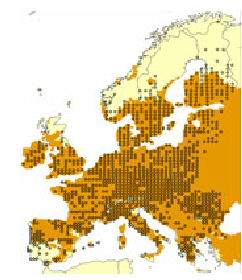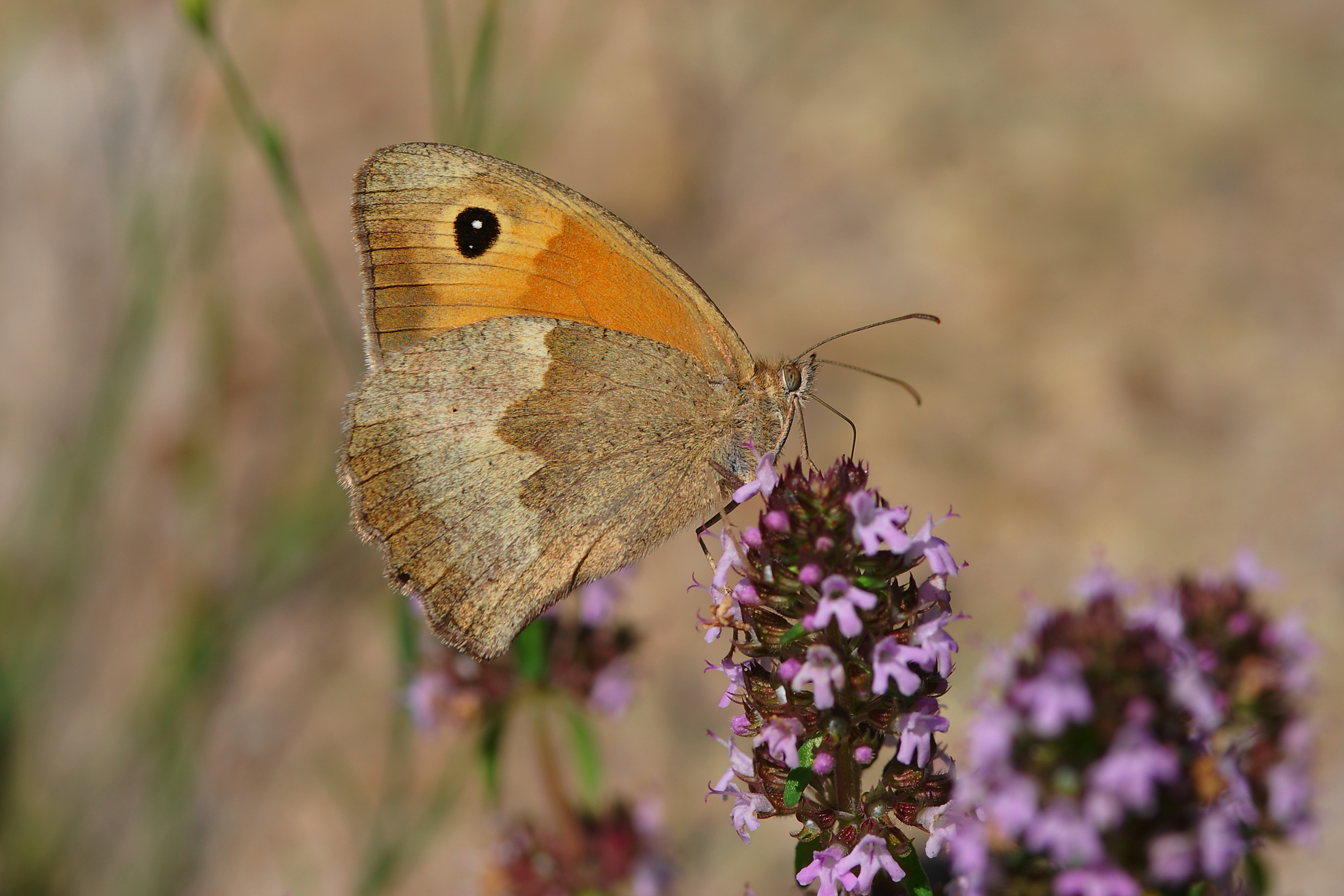Advanced part
This section deals in detail with climatic niche modelling. The focus is on the climatic parameters used.Climatic niche modeling
- The basis for the model development are the habitats of the individual species over a period of about 30 years, e.g. from 1971 to 2000.
- Numerous climatic parameters are used in ecology, meteorology, etc. to characterise the climate in the individual areas.
- However, since a model is a simplified representation of reality, 4 parameters were finally selected from 22 climate parameters.
- The aim was to determine the future areas which would be climatically suitable for the studied butterfly, i.e. in which, for example, the same temperature and precipitation conditions could be present in the future as at the present sites.

The following parameters were selected to describe the climatic niches:
- Range in annual temperature (°C)
- Range in annual precipitation (mm)
- Growing degree days (°C)
- Soil water content (%)
The following pages describe these parameters.
Annual temperature range(°C)
Annual precipitation range (mm)
Growing degree days (°C)
Soil water content (%)
1. Annual temperature range
The calculation is carried out according to the formula:
ΔT = Tmax,m - Tmin,m
Tmax,m - mean temperature of the hottest month
Tmin,m - mean temperature of the coldest month
Example:
- Annual temperature range 2015 in Halle/Saale: ΔT=20°C
- Warmest month was August: Tmax,m= 21,5°C
- Coldest month was February: Tmin,m=1,5°C
Unfortunately wrong! Look at the picture again.
Unfortunately wrong! Look at the picture again.
Right! The extremes are increasing, so the differences between the coldest and hottest months are also increasing.
2. Annual precipitation range
This is how the parameter is calculated:
ΔN = Nmax,m - Nmin,m
Nmax,m - mean precipitation of the wettest month
Nmin,m - mean precipitation of the driest month
Example:
- In 2016 the annual precipitation range in Halle/Saale was ΔN=72mm
- Wettest month was July: Nmax,m=89 mm
- Driest month was February: Nmin,m=17mm
Unfortunately wrong! Look at the picture again.
Unfortunately wrong! Look at the picture again.
Right! In Western and Northern Europe the differences between the extremes will increase.
3. Growing degree days (cumulated temperature values)
gdd
For the growing degree days or "Heat sum", the gdd values of each day are added.
gdd=(Tmax+Tmin)/2-Ts
- Tmax Maximum daily temperature
- Tmin Minimum daily temperature
TsThreshold value at which the metabolism of the plants starts, in this case 5°C.
Example: The butterfly lilac Buddleja davidii blooms only when a heat sum of 550 to 650 is reached. That applies in Germany to the month July - sometimes the value is already reached at the beginning of July, sometimes only at the end of July.
That's not right... Do the math again!
Das ist nicht richtig... Rechne noch einmal nach!
Good calculations!
4. Soil water content
swc
The soil water influences the exchange of water and energy between soil, vegetation and atmosphere. However, the water content of soil can vary considerably depending on soil type, climatic conditions and patterns of use. The swc value is determined for the upper horizon. This is the upper soil layer, usually the more deeply rooted area.Well combined! These are the annual temperature range and the annual precipitation range, which together with the parameters Growing degree days and Soil water content describe the climatic niche.
That’s wrong. Check your answer.
That’s wrong. Check your answer.
2D graphic
3D graphic
4D graphic
Unfortunately wrong! Take a close look at the picture again.
Unfortunately wrong! Take a close look at the picture again.
That's right. The Lesser purple emperor does not feel well at relatively constant temperatures.

Unfortunately wrong! Take a look at the picture again.
Unfortunately wrong! Take a look at the picture again.
That's right! The Peacock only has problems with large temperature differences (e.g. very cold April and very hot July) if the precipitation differences are high.
Where will the Brimstone butterfly occur in 2080?
To answer this question, Europe is regarded as a grid of cells with sizes of 50x50 km2 each. The future climatic conditions are calculated for each cell - in annual steps and for each of the three scenarios GREEN, YELLOW and RED. This shows which areas are suitable or lost for the butterfly according to the assumptions.Modelled distribution area of G.rhamni
| In 2050 many areas for the Brimstone butterfly could be lost (Scenario RED). | This is where the Brimstone butterfly currently occurs in Europe. | This is the climatic niche of the Brimstone butterfly. |
| 1 2 3 | 1 2 3 | 1 2 3 |